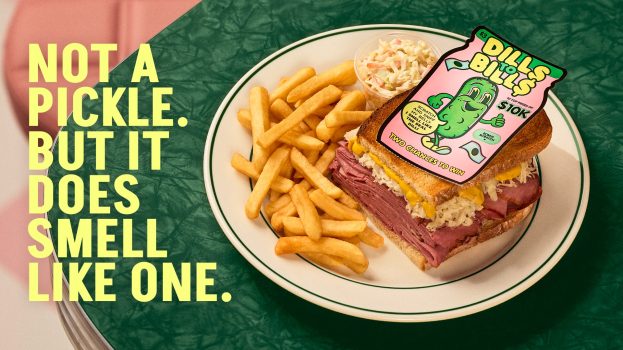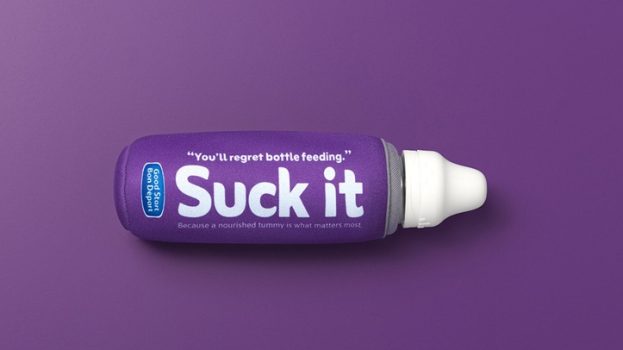Time-pressed grocery shoppers aren’t going to venture down the cereal aisle in Loblaws unless they need cereal. Nor are they going to seek out the music section of Wal-Mart unless they really want that new Pearl Jam CD.
Accepting this harsh reality, marketers realize that getting outside of their traditional position inside retail environments is key to gaining trial and awareness and that teaming up with bigger brands – particularly those that have more influence at retail – is a surefire way to achieve these goals.
James Fraser, MD/channel marketing at Toronto-based promo agency Capital C, calls it the ‘horse-and-rider’ strategy and says it makes a lot of sense, particularly for smaller packaged goods companies who can leverage mass awareness of larger brands. Not only does the ‘rider’ brand get exposure outside its typical aisle, it can also benefit from POS and flyer support and the opportunity to drive trial, he says.
As an example, Fraser points to a co-promo he stumbled across in early May – a chance to pick up a free loaf of Country Harvest bread with the purchase of a large tub of Becel margarine. ‘For Becel, the benefit is getting that name out there with a great offer, but they aren’t eroding the brand at all,’ he says. ‘For Country Harvest Bread, they get sampling out of it – and new customers.’
For Blaine Schwingenschlegel, manager of national accounts at Toronto-based Sony BMG Music Canada, it’s all about getting outside of what he calls the ‘music bullpen’ of big box retailers. ‘Not every shopper goes into [the department] obviously, so I try to develop ideas that get me exposure out of the department.’
He adds: ‘The retail space is now more important than ever, because everyone knows physical CD sales are down, and we’re now competing for space with DVD companies and all the other labels. Yet we have just as many titles as we’ve ever had, and we need to be positioned at the right place. The more people see the CDs we have, the more they’ll buy them.’
Fortunately, Schwingenschlegel has several nifty promos up his sleeve that should help him overcome the challenge of shrinking shelf space by carving out a presence elsewhere. One is Sony BMG’s involvement with the Dairy Farmers of Canada’s current ‘Moo You Win’ promotion. Consumers buy a carton of milk and if it moos when they open it, they win. The grand prize is a trip for two to see Sony BMG operatic quartet Il Divo in Scotland. As a result of the deal, the band gets exposure from collateral hung on clipstrips in the refrigerator aisle, right next to the milk, as well as mention in a TV spot, by Toronto agency Due North Communications, highlighting the promo.
The record label has also connected with Hershey for its Country Kisses campaign, which will begin at Zellers stores this month. Featuring several of Sony BMG’s country artists, the promo involves a free bag of Kissables with a purchase of any one of the CDs. Says Schwingenschlegel: ‘From Hershey’s perspective, they’re aligning themselves with music inside Zellers in an out-of-department area for them, and they get to give their potential customer a chance to taste their product. For us, we add value to the purchase of a CD, we get in-store signage, we get better placement in the store and we get block racking for multiple titles that fit a certain demographic.’
Similarly, last month Sony BMG gave away a free Tego skin for mobile phones with the purchase of a featured CD at Zellers, while during the Easter holiday, the record label’s Peter Cottontail DVD was packaged with Cadbury Mini-Eggs at Costco, leading to ‘prime placement in the DVD section.’
While Sony BMG is naturally looking outside the company to foster co-branding relationships, other marketers realize they can get more oomph at retail by associating with other brands within their own company. Pepsi-QTG is one of them. Dale Hooper, VP marketing at Mississauga, Ont.-based Frito Lay Canada, which is part of the Pepsi-QTG family, points out there have been several such alliances in the last few years. A recent effort involves the CPG firm’s Smart Spot products (all the company’s ‘healthy’ offerings sport one of these labels), whereby if shoppers bought three brands they received a free box of Quaker’s new Acapella cereal.
A second promo involved a giveaway of baked Doritos or baked Fritos with a 12-pack of Diet Pepsi. ‘Diet Pepsi has higher penetration compared to our baked lineup, and we wanted to make sure that we drive trial and awareness of [the latter],’ says Hooper, who adds that for the past several years Frito-Lay has similarly offered consumers a free jar of Tostitos salsa with the purchase of any other two Tostitos products. ‘It creates co-purchasing opportunities. For instance, if you could get consumers to buy chips and salsa together then you build that habit, and that’s obviously going to increase the ring for retailer’s baskets.’
Pepsi-QTG has focused more heavily on such in-store co-branding programs in the last 12 to 18 months. ‘We’ve stepped up our efforts and focused on ‘power of one’ initiatives like the Smart Spot program. We look to find ways to increase display size or frequency of display, or [gain] more visibility for a new product.’
The CPG firm’s Quaker division has also turned its attention to ‘power of one’ initiatives recently. One example is the ‘Wake up a Winner’ breakfast promo that involved pulling several breakfast brands together and displaying them as a group on end aisles. ‘We anchor the promo with Tropicana and Quaker, because they are two of the more healthful brands within the breakfast [category],’ says Doris Bitz, VP marketing for Quaker Foods and Snacks. ‘It drives trial and household penetration for smaller brands, like Quaker Corn Bran and Quaker Squares,’ she explains, adding, ‘we see significant lift, particularly for our cereal…. Canadians carry seven cereal brands [on average] in their cupboard and whoever has visibility gets rotated in, so increased visibility drives increased sales.’
Capital C’s Fraser says that large-scale promos like ‘Wake up a Winner’ have a
greater chance of success within the grocery channel than smaller, low-key initiatives, because the majority of retailers are trying to cut back on the amount of promotion they have in the aisle. ‘They’re trying to streamline what the consumer is seeing, so ‘fewer, better, bigger strategies’ is something we’re continually hearing,’ he notes, adding that the ‘horse-and-rider’ trend will accelerate in the future, as retailers continue to collect data on their customers.
‘You’ll be able to send a specific consumer a specific offer that makes sense for them. Everyone’s going to benefit – the retailer will increase their shopping basket, the consumer gets the benefit of added value and from the manufacturer perspective, there’s no question they will be talking to the right consumer.’
Breaking down the walls
It’s not always easy to get Wal-Mart to agree to a unique in-store display, especially if you don’t have the pull of a Procter & Gamble. In fact, Sony BMG doesn’t even deal directly with the retailer, instead relying on pre-recorded music distribution firm Handleman Company in Troy, Mich., to negotiate merchandising programs on its behalf.
But Blaine Schwingenschlegel, manager of national accounts at the Toronto-based record label, has cleverly worked around this challenge.
Recently, the company hooked up with McDonald’s locations inside Wal-Marts to feature its ‘CD of the month’ with a ‘buy one get one free’ offer.
On the CD packs sold inside Wal-Mart, shoppers are informed that if they purchase the CD, they can get two Big Macs for the price of one. ‘And then at McDonald’s, we have tent cards and tray liners advertising the artist of the month, essentially driving people back inside the music section to pick up the CD and get the ‘buy one get one free,” he says.
Schwingenschlegel adds that it’s an example of how Sony BMG is working to leverage associations with brands that have a more historical relationship with the retailer. Talk about thinking outside the box.























